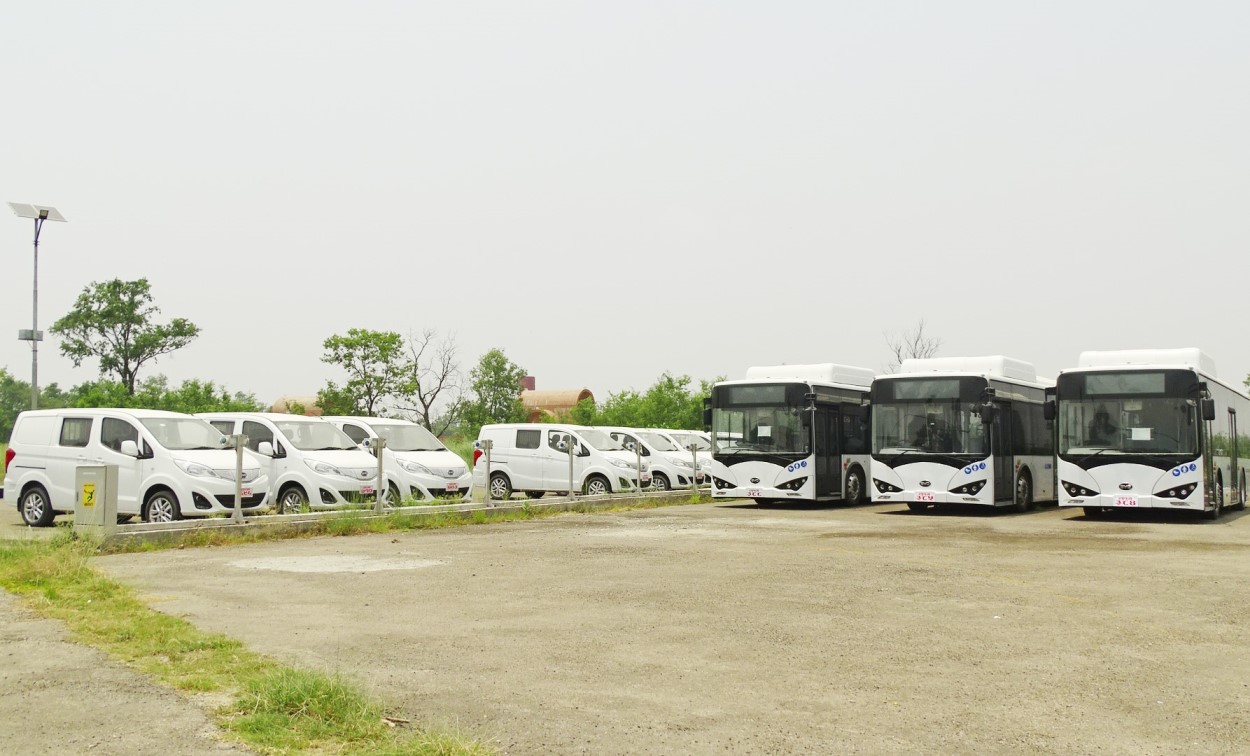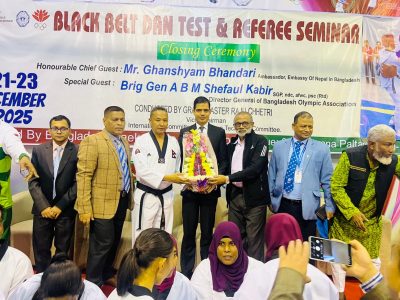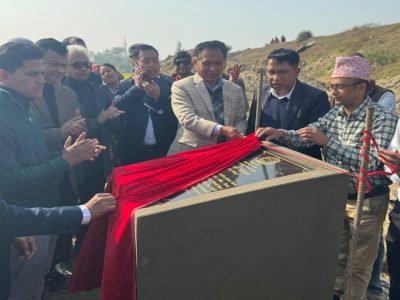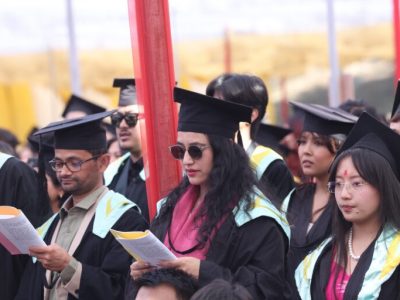Dumped electric vehicles in Lumbini begin to break down: Donor’s gift goes to waste

Nineteen electric vehicles that were provided by foreign donors in subsidy have been stranded in Lumbini for the past over two years, thanks to a delay in the legal and operational procedure.
The government bought the vehicles at the cost of Rs 130 million provided by the Asian Development Bank as a subsidy through the Clean Energy Project. The vehicles that were imported to Nepal on 24 November, 2020 through the Ministry of Culture, Tourism and Civil Aviation were later handed to the Lumbini Development Trust (LDT). The government spent over Rs 30 million in tax for importing the vehicles, it is said.
The import of the vehicles aims to connect the Bhairahawa-based Gautam Buddha International Airport with religious and tourist destinations including Lumbini, the birthplace of Gautam Buddha, Tilaurakot, Ramgram, Devdaha and surrounding areas, make movements of tourists easier and get Lumbini and surrounding areas rid of pollution, said the concerned authorities, adding that a delay in the legal and operational process has made the matter worse.
The luxurious electric vehicles include five 19-seat buses and 14 five-seat vans. They have automatic doors and are disabled people friendly. But, much to add to the problem, the dumped vehicles have started breaking down. Some of them have reported malfunction in their tyres and batteries, said local people.
For them, charging stations have been also constructed in Lumbini at the cost of Rs 139 million.
Vice Chairperson of the Siddhartha Hotel Association Megh Nath Acharya said the state’s property has been destroyed by dumping the vehicles. The LDT should take the task of developing the operation modality and running the vehicles, he said. “The vehicles will completely break down in some years when it gets a further delay for their operation,” he said.
He blamed the concerned authorities for being apathetic towards their operation. It took a whopping three years to develop its operational modality and changing the number plates, he said. “It takes no time to convert government vehicles into private or tourist buses. But, there have been various pretexts.”
The LDT on 29 September, 2022 tested the operation of five of them targeting Dashain, Tihar and Chhath festivals. But, they could not last long as they stopped operation after the festivals. During the festivals, they offered service for free. Staffs of the Nepal Police and Armed Police Force drove them along routes including Lumbini-Tilaurakot circuit, Lumbini-Gautam Buddha International Airport-Belahiya-Devdaha, Lumbini-Buddha Chowk-Butwal’s circle park.
Chairperson of the Nepal Association of Travels and Tour Agents, Lumbini Province, Rachana Panta viewed that it would deliver a negative message by stranding the vehicles that were received from foreign donors with the aim to promote tourism of Lumbini.
She put up her concern with the LDT office bearers about the matter requesting them to hand over the operation of the vehicles to private sector. And the LDT should monitor their operation. Their operation would last long when private sector gets operational responsibilities, she was of the view. “Nevertheless, it is not a good sign that these vehicles have been stranded for long. They must be operational by making required laws.”
The LDT treasurer Dhundi Raj Bhattarai said the federal Tourism Ministry had been asked about its nod to convert the government vehicles (vehicles bearing white coloured number plates) into tourist ones (vehicles bearing green coloured number plates).
“The regulatory body should open the door to convert government vehicles into tourist ones. For this, we have written to the Ministry. But, there is a delay. So, we are discussing the subject of taking up the matter with the provincial government and get a decision to this effect,” he said.
Operation of the vehicles was successfully tested six months ago, he said. “We have carried out a study of the situation of the vehicles, and the roads they ply. They can operate within the Greater Lumbini without any hindrance.”
On their operation, the LDT itself operate them in the beginning. “We could go for private or partnership model only after some time,” he said.
Except the headline and the cover picture, this story has not been edited by DCNepal staff and is published from a syndicated feed by RSS.
Facebook Comment
latest Video
Trending News
- This Week
- This Month













